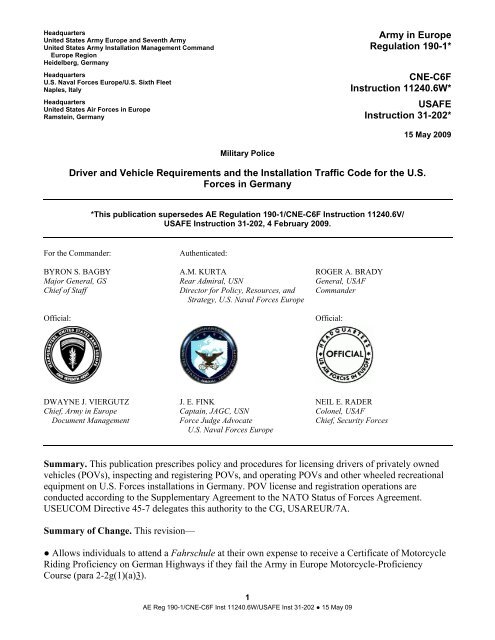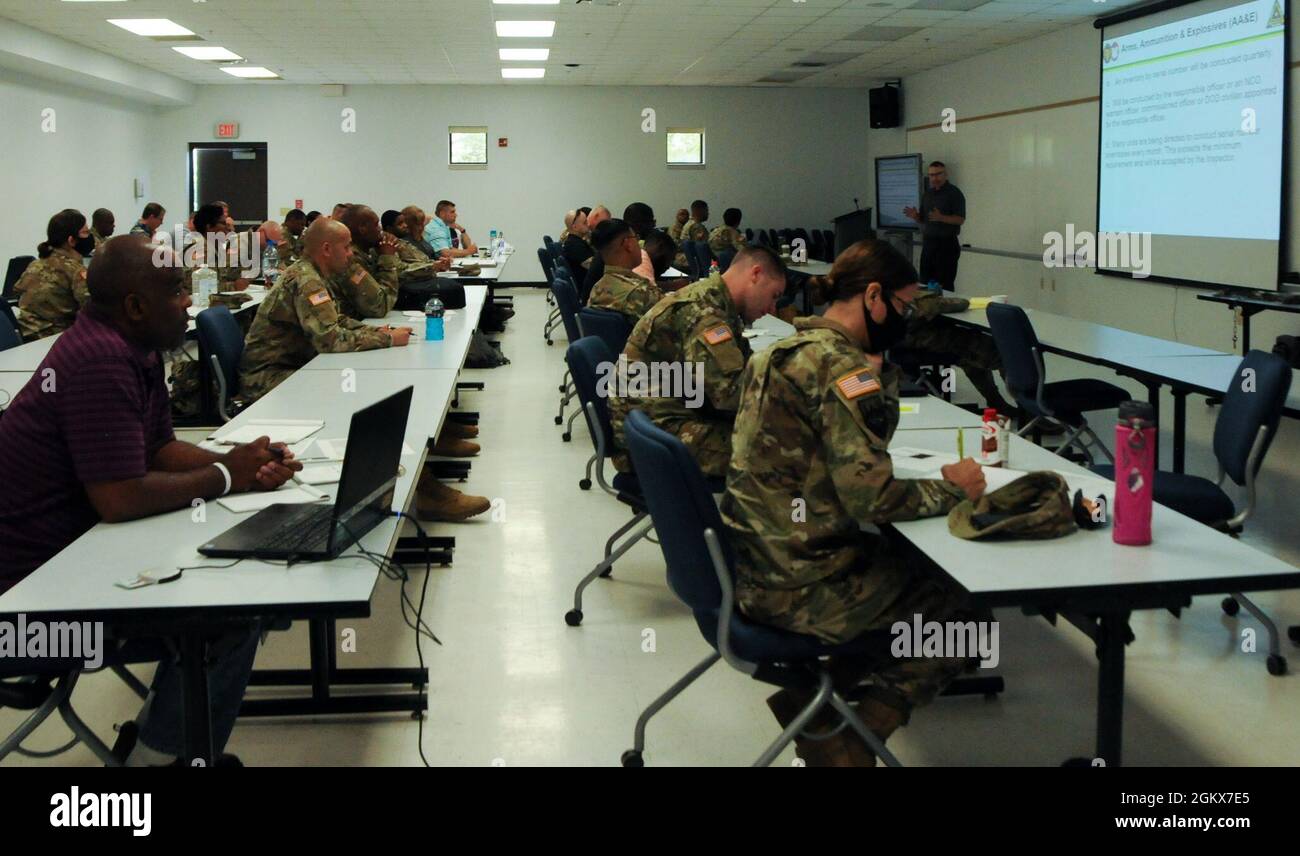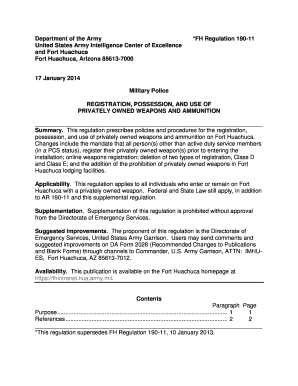Army Regulation 190-56 : What it is
Army Regulation 190-56: Understanding its Significance Introduction The Army Regulation 190-56 (AR 190-56) holds immense importance in the functioning of the United States Army. It provides comprehensive guidelines and regulations for the management of the Army Crime Prevention Program (ACPP). In this post, we will delve into the details of AR 190-56, covering its objectives, provisions, and frequently asked questions. So, without further ado, let's explore this essential regulation. 1. What is AR 190-56? AR 190-56 is an Army Regulation that sets forth policies, responsibilities, and procedures for the implementation of the ACPP. The primary purpose of the ACPP is to prevent crime, protect personnel and resources, and foster a secure environment within the United States Army. The regulation addresses key aspects, including training requirements, reporting procedures, and crime prevention measures. It aims to create an Army-wide culture that prioritizes crime prevention and ensures the well-being of Army personnel. 2. Key Provisions of AR 190-56 AR 190-56 includes several significant provisions that contribute to the success of the ACPP. Let's take a closer look at some of the key provisions outlined in this regulation: 2.1 Training Programs To cultivate a strong foundation in crime prevention practices, one of the central aspects of AR 190-56 is the establishment of mandatory training programs. These programs educate Army personnel about risk factors, preventive measures, and the importance of reporting suspicious activities. Training sessions are regularly conducted to equip soldiers with the knowledge and skills needed to recognize and prevent potential criminal acts. 2.2 Reporting Procedures Timely and accurate reporting is crucial in preventing crime within the Army. AR 190-56 provides clear guidelines on reporting procedures for incidents, potential threats, and suspicious activities. It emphasizes the importance of prompt action and responsible reporting to ensure the safety and security of Army personnel and resources. 2.3 Crime Prevention Measures The regulation requires the implementation of various crime prevention measures aimed at reducing the risks faced by the Army community. These measures include physical security enhancements, utilization of surveillance systems, access control protocols, and community engagement initiatives. By adopting these measures, the Army aims to create a secure environment that actively discourages criminal activities. 3. Frequently Asked Questions (FAQs) about AR 190-56 3.1 Q: Who is responsible for implementing the guidelines stated in AR 190-56? A: The responsibility for implementing the regulations and guidelines outlined in AR 190-56 falls upon the commanders at all levels within the Army. They are accountable for ensuring that the ACPP is effectively executed and followed by Army personnel under their command. 3.2 Q: How often are crime prevention training programs conducted? A: The frequency of crime prevention training programs may vary depending on multiple factors, including the location, unit size, and operational needs. However, as per AR 190-56, commanders are required to conduct such training programs at least annually. 3.3 Q: What role can Army personnel play in crime prevention? A: Army personnel play a critical role in crime prevention. By remaining vigilant, reporting suspicious activities, and actively participating in training programs, they contribute towards building a robust crime prevention network. Their commitment to crime prevention helps to maintain a secure environment for all members of the Army community. Conclusion The Army Regulation 190-56 serves as a vital framework for the effective implementation of the Army Crime Prevention Program. Through comprehensive training, reporting procedures, and crime prevention measures, the Army aims to create a secure environment for its personnel. AR 190-56 demonstrates the Army's commitment to the well-being of its members and highlights the importance of preventing crime within its ranks. Remember, as members of the Army community, it is our collective responsibility to uphold the principles outlined in AR 190-56 and actively participate in the Army's crime prevention efforts. By doing so, we contribute towards fostering a safe and secure environment for everyone associated with the United States Army.  Image Source : armymilitary.net
Image Source : armymilitary.net  Image Source : www.yumpu.com
Image Source : www.yumpu.com  Image Source : www.amazon.com
Image Source : www.amazon.com  Image Source : www.carlislecityfc.com
Image Source : www.carlislecityfc.com  Image Source : www.barnesandnoble.com
Image Source : www.barnesandnoble.com  Image Source : www.alamy.com
Image Source : www.alamy.com  Image Source : www.pdffiller.com
Image Source : www.pdffiller.com  Image Source : www.uslegalforms.com
Image Source : www.uslegalforms.com
Army Bah Regulation 210-50 - Army Military
 Image Source : armymilitary.net
Image Source : armymilitary.net Army In Europe Regulation 190-1 - IMCOM-Europe - U.S. Army
 Image Source : www.yumpu.com
Image Source : www.yumpu.com Military Police: The Army Physical Security Program (Army Regulation
security physical police military army program flip amazon front back
DA PAM 190-51 PDF
 Image Source : www.carlislecityfc.com
Image Source : www.carlislecityfc.com 190 pam da pdf author
Army Regulation AR 190-56 Military Police The Army Civilian Police And
army police
The U.S. Army Reserve’s 99th Readiness Division Hosts A Physical
 Image Source : www.alamy.com
Image Source : www.alamy.com Fillable Online Palmbeachschools The Marzano Framework - The School
 Image Source : www.pdffiller.com
Image Source : www.pdffiller.com MCoE Regulation 190-11 2014-2021 - Fill And Sign Printable Template
 Image Source : www.uslegalforms.com
Image Source : www.uslegalforms.com mcoe regulation form 2021 pdf worksheet service school sign signnow preview
Military police: the army physical security program (army regulation. 190 pam da pdf author. Army police. Security physical police military army program flip amazon front back. Army bah regulation 210-50